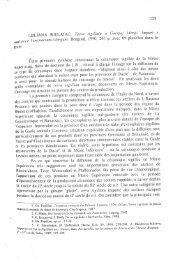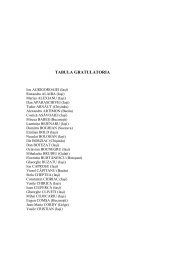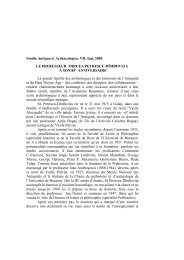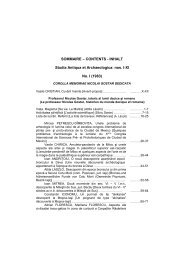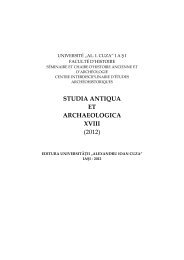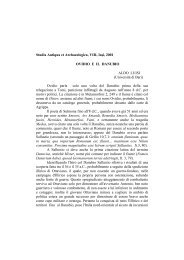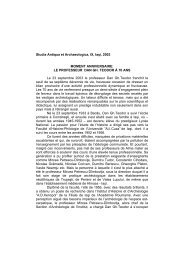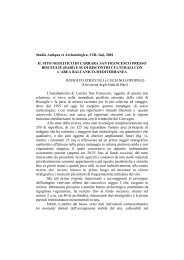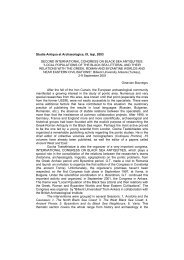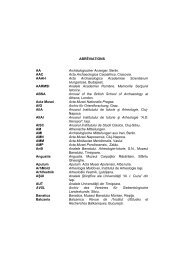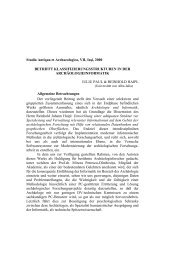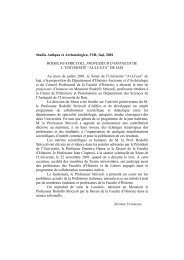VALERIU SÎRBU, Arheologia funerară şi sacrificiile: o terminolo
VALERIU SÎRBU, Arheologia funerară şi sacrificiile: o terminolo
VALERIU SÎRBU, Arheologia funerară şi sacrificiile: o terminolo
You also want an ePaper? Increase the reach of your titles
YUMPU automatically turns print PDFs into web optimized ePapers that Google loves.
202 COMPTES-RENDUS<br />
of specializes terms) begins<br />
with a translation mistake right in the title: an unifying. It would have been<br />
correct to say a unifying, u being, in this situation, a semi-vowel which<br />
behaves like a consonant in the case of articles (definite or indefinite).<br />
The book’s structure is simple, opening with an Introduction (I., p.<br />
7-14) followed by two chapters which constitute the body of the work:<br />
Funerary archaeology and sacrifices (II., p. 15-53) and Clay vessels from<br />
the Geto-Dacian world (III., p. 55-77) and ending with the Bibliography<br />
(IV., p. 79-80) and the Illustration (V., p. 81-123).<br />
In the Introduction, the parts that make up the book are presented<br />
and explained, with the mention that the volume had in view especially the<br />
Thracian world (p. 7). This aspect is obvious all along the book, reason for<br />
which we consider that the title of the volume should have expressed this<br />
more clearly. Another statement which practically excuses all the possible<br />
shortcomings of the work is that the created system is one that is opened<br />
to any kind of data, data that even was not perceived by the authors, or<br />
will appear in the future discoveries (p. 8). The database is presented as<br />
split into two large parts (the funerary domain and non cremated human<br />
bones in non-funerary contexts), each of these being structured on three<br />
levels (the monument’s type and its essential characteristics, the<br />
archaeological complexes in which the dead were discovered and the<br />
dead with its personal characteristics and its grave goods (p. 8). The<br />
difficulties of the systematization of the data due to the lack of sufficient<br />
information for the cases researched up to the present moment were also<br />
described in this introductory part. It is a pity that the author didn’t offer<br />
some more clear models for the registration of the data on the field, fact<br />
which would have assured a better way of keeping track of the<br />
information. The hardware and software information related to the created<br />
database were presented at the end of the Introduction (p. 13-14).<br />
The second chapter, dealing with the funerary archaeology and<br />
sacrifices, is structured in two main parts: a dictionary of terms and a<br />
general lexis (if we are to follow the author’s own translation, even if<br />
dictionary of terms looks very much like a pleonasm.<br />
The Dictionary of terms tries to define the general terms of the<br />
funerary field with the desire / hope of stimulating a future unified<br />
language which would eliminate the so frequent confusions due to the<br />
more or less chaotic use of specialized terms. The words that are more or<br />
less ambiguous were followed by commentaries that try to explain the<br />
choice made by the author. One of the most interesting terms, largely<br />
discussed, is that of cemetery / necropolis (p. 16-17). The statement that




